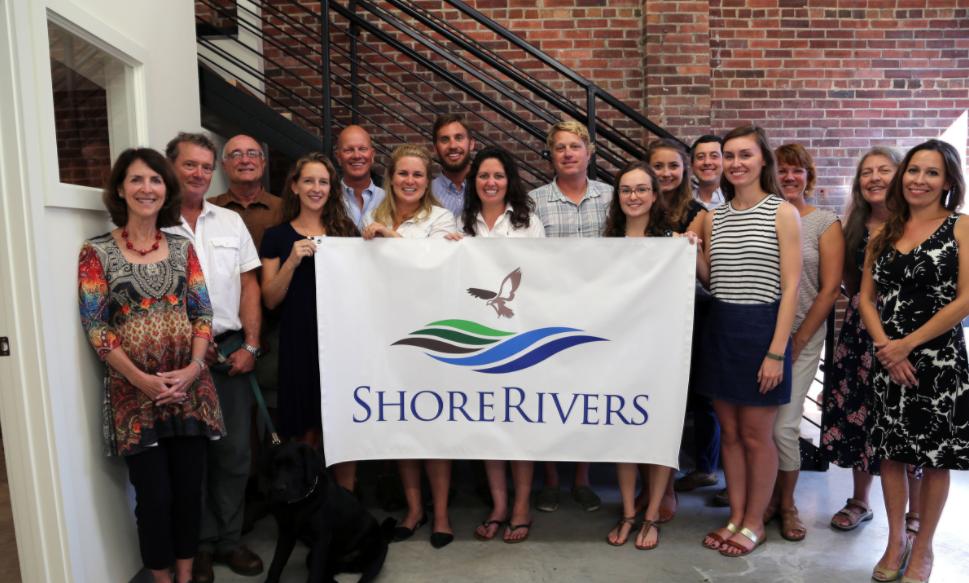The Eastern Shore’s rivers weave through farmland, forests, marshes and towns on their way to the Chesapeake Bay. Each river is unique, with its own character, but they share in common the fish, crabs, waterfowl and people that depend on them.
Much as these individual rivers ultimately come together as part of the Bay, three great Eastern Shore conservation organizations are uniting. Midshore Riverkeeper Conservancy, Chester River Association and Sassafras River Association are merging into a single nonprofit, ShoreRivers, Inc., to serve as a leading voice for healthy waterways on Maryland’s Eastern Shore.
Through science-based advocacy, restoration and education, ShoreRivers will protect and restore Eastern Shore waters that flow into the Chesapeake Bay. We will work collaboratively with our communities, yet maintain an uncompromising voice for clean rivers and the living resources they support.
Our three legacy organizations each have a deep history of working collaboratively to improve the health of the waters in our communities, and that mission will continue. By joining together, we become more than just the sum of our parts – we will be one committed voice with more influence on policy, more capacity to enact programs, and more potential to undertake large restoration projects that directly reduce pollution.
We will need that influence to tackle the major issues affecting our environment. ShoreRivers will now be a statewide leader on conservation issues so that when we travel to Annapolis to meet with elected officials or to testify for legislation, we will have the backing of our 3,500 supporters who care about our waters and our Eastern Shore quality of life.
We will also have increased capacity to implement bigger, better projects. That means expanded work with our agricultural partners, broader funding to encourage innovative technologies that reduce pollution, and region-wide restoration projects that capture polluted runoff before it enters our rivers.
From Kennedyville to Kent Island, from Cambridge to Crumpton, ShoreRivers staff, partners and volunteers will work together across the Eastern Shore. You’ll see us out on the rivers and creeks as well as in farm fields and forests. Our leadership, staff and board of directors are comprised of members of the three legacy organizations.
The main headquarters for ShoreRivers will be in downtown Easton at the Eastern Shore Conservation Center. We will also maintain regional offices in Chestertown and Georgetown, the former offices of the Chester River Association and Sassafras River Association, respectively. And we will heavily rely on watershed advisory boards for each major river to continue our strong local connections.
An important part of our mission is our Waterkeeper program. Waterkeepers are full-time advocates who regularly patrol and monitor their local bodies of water. Including the ShoreRivers merger, there are now 17 Waterkeepers working in the Chesapeake Bay region – 11 in Maryland. Waterkeepers focus on their individual waterbodies, but frequently work together with other “Keepers.” ShoreRivers will have four Riverkeepers: Jeff Horstman is the Miles-Wye Riverkeeper; Emmett Duke is the Sassafras Riverkeeper; Matt Pluta is the Choptank Riverkeeper and Tim Trumbauer is the new Chester Riverkeeper.
Despite encouraging signs of clearer water and more grass beds in recent years, the waterways of the Eastern Shore remain polluted – they are still threatened with excess nitrogen, phosphorus and sediment runoff. At ShoreRivers, we believe there are real solutions to these threats, and we are committed to developing projects and programs that will improve the health of our waters and keep them robust and beautiful for all of us – now and in the future.
Jeff Horstman is the Miles-Wye Riverkeeper and Executive Director of ShoreRivers and Isabel Junkin Hardesty is the former Chester Riverkeeper and new Regional Director of ShoreRivers.



Write a Letter to the Editor on this Article
We encourage readers to offer their point of view on this article by submitting the following form. Editing is sometimes necessary and is done at the discretion of the editorial staff.